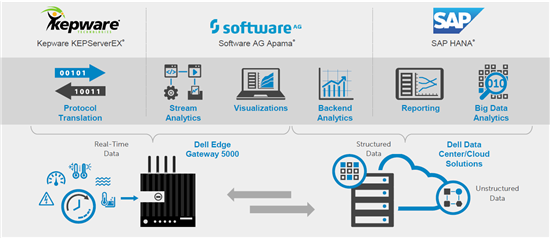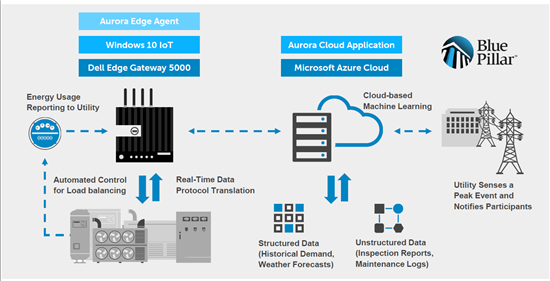To accelerate adoption of the IoT we have to transition from today’s custom approach where every deployment is a ‘snowflake.’ If every house in America was unique, they would take twice as long to build, have substantially more structural issues, and most of us would not be able to afford them.

It is no different with IoT deployments. As long as they are mostly custom, adoption will be slow due to the time it takes to commission projects, they will be hard to manage and secure, and companies will not be able to get economies of scale from all the work to stitch the pieces together.
Dell is approaching the commercial IoT market the same way we approached the server market 10 years ago and the PC market 20 years ago. Dell wins with an open, standardized, and repeatable solution. To do this we have completed extensive customer research to identify the top horizontal use case applications across the IoT. These use cases include things like predictive maintenance and energy management which span across multiple verticals. We are planning our intelligent IoT gateway and embedded PC products to be optimized for these use cases, and we are also building out our partner ecosystem to ensure coverage across IoT channels for the use cases.
Where our use case strategy, our best in class products, and our comprehensive partner ecosystem converge is in the form of blueprints. These blueprints are use case specific edge to data center validated reference architectures (RA) including Dell and partner ingredients. They will include implementation guides with deployment steps to consider, case studies of customers who have successfully deployed the blueprint, and white papers to highlight best practices around security, manageability and analytics.
As much as Dell wants the IoT market to be 100% repeatable we realize that operations systems integrators (SIs) play a critical role customizing solutions for specific vertical requirements. We are intentionally building these blueprints for SIs to provide consistent building blocks to limit the necessary customization required, and enable them to implement solution quicker.
As we launch our IoT Solutions Partner Program this week we are also announcing our first two blueprints.
Dell, Kepware, Software AG and SAP are collaborating to develop IoT-enabled predictive maintenance (PdM) models that use distributed analytics to address the equipment industry’s biggest operational challenges, such as unplanned downtime, overall equipment effectiveness, maintenance cost and return on assets. Software AG’s Big Data Streaming Analytics Platform together with Dell’s purpose-built gateways allows customers to process large amounts of data extremely fast in real-time. A joint Blueprint offers Six Steps to Delivering Maintenance Efficiency with PdM.
Kepware’s Director of Marketing Communications, Torey Penrod-Cambra, recently spoke about how Dell is creating a comprehensive ecosystem of ISVs with a uniquely open approach enabling a “high tide to raise all ships”. She also spoke about her view of Dell’s market leadership in the area of bringing together multiple partners to form blueprints as “turn-key solutions for customers”. You can watch the full video interview here.
Dell has also collaborated with Microsoft and Blue Pillar on Automated Demand Response solutions to forecast potential peak energy times and balance the grid through additional generation or reduction in consumption. More is covered in our joint Blueprint, Five Steps to Improving Facility Management with ADR.
These two blueprints are just the beginning as Dell seeks to accelerate adoption of the IoT by creating building blocks for customers to leverage to get them to ROI faster. No more snowflakes!
Snowflake image by James Mann via Creative Commons


